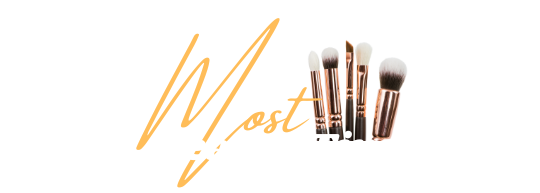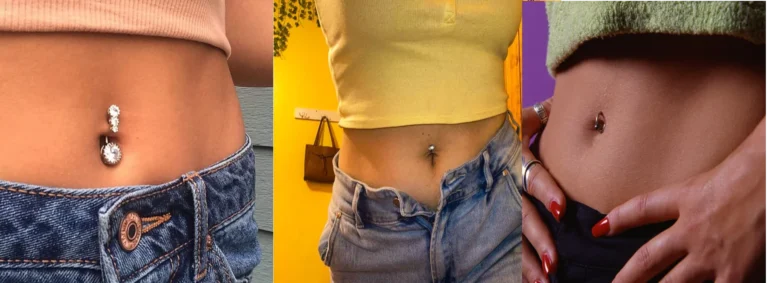Belly Button Chronicles: Real Stories from Navel Piercing Enthusiasts
Navel piercing, also known as belly button piercing, is a popular form of body piercing that involves creating an opening in the skin around the navel and inserting a piece of jewelry. It is a great way to express your personal style and add a touch of glamour to your look. In this article, we will discuss everything you need to know about navel piercing, including the cost, pain level, placement options, jewelry types, and Most Beauty Tips.
History of Navel Piercing
The historical account of navel piercing has been clouded by persistent myths, notably fueled by Doug Malloy’s pamphlet, “Body & Genital Piercing in Brief.” Malloy’s claim that ancient Egyptian aristocrats embraced navel piercing, as depicted in Egyptian statuary, is contested by alternative sources.
In contemporary culture, navel piercing gained popularity after model Christy Turlington showcased hers at a 1993 London fashion show. The trend’s widespread adoption, however, is credited to the 1993 Aerosmith music video for “Cryin’,” where Alicia Silverstone, guided by body piercer Paul King, received a navel piercing, cementing its place in mainstream appeal.
What is Navel Piercing?
Navel piercing is a type of body piercing that involves creating an opening in the skin around the navel and inserting a piece of jewelry. It is a popular form of self-expression and has been around for centuries. The precise process of navel piercing hinges on the selected piercing, but typically entails proficient piercers using a sterile needle to create a small opening in the skin of your navel. They then insert an earring, stud, barbell, or ring. Following this, you’ll receive tailored care instructions and products designed to prevent infection and facilitate the healing process.
Choosing the Right Piercing Studio
When it comes to getting a piercing, choosing the right studio or Salon is crucial to ensuring a safe and enjoyable experience. Here are some tips to help you choose a reputable piercing studio:
- Research: Do your research and look for studios with experienced and licensed piercers who adhere to strict hygiene and safety standards. You can also ask for recommendations from friends or family members who have had piercings.
- Read Reviews: Reading customer reviews can provide valuable insights into the studio’s reputation. Look for reviews that mention the cleanliness of the studio, the professionalism of the piercers, and the quality of the jewelry.
- Visit the Studio: Don’t hesitate to visit the studio in person to assess its cleanliness and ambiance. A reputable studio should be clean, well-lit, and have a welcoming atmosphere.
- Check for Certifications: Look for studios that have certifications from organizations such as the Association of Professional Piercers (APP). These certifications indicate that the studio follows strict safety and hygiene standards.
- Ask Questions: Don’t be afraid to ask questions about the piercing process, the piercer’s experience, and the type of jewelry used. A reputable piercer should be happy to answer your questions and address any concerns you may have.
Remember, your health and safety should be the top priority when selecting a piercing studio. By following these tips, you can choose a reputable studio and enjoy your piercing experience with confidence.
Types of Navel Piercings
Navel piercing is a popular form of body art that has been around for centuries. It is a type of piercing located through the skin of the navel and is most commonly located on the upper fold of the skin, but can also be effected underneath or around the edges of the navel. There are several types of navel piercings, each with its own unique style and placement. Here are some of the most popular types of navel piercings:
- Upper Belly Button Piercing: This is the most common type of Belly Button Piercing and is located on the upper fold of skin above the navel. It is also known as the “top belly button” piercing. This piercing is suitable for most body types and is a great option for those who want a classic look.
- Lower Belly Button Piercing: This piercing is located on the lower fold of skin below the navel and is also known as the “bottom belly button” piercing. It is a great option for those who want a unique twist on the classic Belly Button Piercing.
- Single Belly Button Piercing: This is the most common one and is a single barbell or ring inserted through the navel either below or above the belly button, depending on your anatomy and preferences.
- Double Belly Button Piercing: This piercing involves piercing both the upper and lower areas of the navel, creating an eye-catching aesthetic. It is a great option for those who want to make a bold statement with their body art.
- Inverse Belly Button Piercing: This piercing is located on the top fold of skin above the navel but is done in reverse. The jewelry is inserted through the bottom of the navel and exits through the top. It is a great option for those who want a unique and edgy look.
- Floating Belly Button Piercing: This piercing is located on the upper fold of skin above the navel, but is not connected to the lower fold of skin. The jewelry appears to “float” above the navel, creating a unique and eye-catching look.
When choosing a Belly Button Piercing, it’s important to consider your body type and personal style. A reputable piercer can help you choose the right type of piercing and jewelry to suit your needs. Remember to follow proper aftercare procedures to ensure a safe and successful healing process.
Who Might Want a Navel Piercing, and Why Is It Popular?
Navel piercing is a great choice for anyone looking to try out piercing for the first time, since it’s easy to conceal and not too painful. Many people like navel piercings because they’re relatively easy to care for, and they showcase your personal style while still being easy to hide in some situations.
Is Belly Button Piercing Safe During Pregnancy?
Yes Belly Button Piercing Safe During Pregnancy, Keeping a belly button piercing during pregnancy is generally considered safe if the piercing is well-healed and positioned higher on the navel. It’s important to maintain good hygiene, monitor for signs of infection, and consult with a healthcare provider if concerns arise. While many women successfully retain their piercings without issues, individual variations and proactive care are key considerations.
How Much Does Navel Piercing Cost?
The cost of navel piercing varies depending on several factors, including the location of the piercing studio, the experience of the piercer, and the type of jewelry used. On average, you can expect to pay between $30 and $80 for a navel piercing, along with the cost of the jewelry.
Pain Level and Healing Time
Navel piercing is generally considered to be a low-pain piercing, as the navel is a fleshy area with no cartilage. Many people say that the pinching caused by the clamp is the worst part. The healing time for navel piercing is typically six months to a year, and aftercare is fairly easy and low-risk. Just keep the area clean and dry, washing it twice a day with sterile saline.
Placement Options
Navel piercings are pierced through the skin surrounding the navel, with a traditional navel piercing centered directly above it. However, there are other placement options available, depending on your anatomy and preferences.
Risks of Navel Piercing
- Infection: Navel piercing can lead to infection if proper aftercare is not followed. In this section, we will discuss the signs of infection and how to prevent it.
- Scarring: Navel piercing can lead to scarring if the piercing is not done properly or if proper aftercare is not followed. In this section, we will discuss how to minimize scarring.
- Rejection: Navel piercing can be rejected by the body if the piercing is not done properly or if the jewelry is not suitable for the individual. In this section, we will discuss the signs of rejection and how to prevent it.
- Allergic Reaction: Navel piercing can lead to an allergic reaction if the individual is allergic to the jewelry or the cleaning solution used. In this section, we will discuss the signs of an allergic reaction and how to prevent it.
- Tearing: Navel piercing can lead to tearing if the jewelry is caught on clothing or other objects. In this section, we will discuss how to prevent tearing.
Navel Piercing Procedure
- Choosing a Piercer: Choosing the right piercer is essential to ensuring a safe and successful navel piercing. In this section, we will discuss how to choose a reputable piercer.
- Choosing Jewelry: Choosing the right jewelry is important for both the look and safety of your navel piercing. In this section, we will discuss the different types of jewelry available and how to choose the right one for you.
- The Piercing Process: The piercing process can be intimidating, but it is important to know what to expect. In this section, we will discuss the steps involved in the piercing process.
- Aftercare: Proper aftercare is essential to ensuring a safe and successful navel piercing. In this section, we will discuss how to care for your piercing after it has been done.
Navel Piercing Aftercare
- Cleaning the Piercing: Cleaning your piercing is essential to preventing infection and promoting healing. In this section, we will discuss how to clean your piercing properly.
- Avoiding Irritants: Avoiding irritants is important to preventing infection and promoting healing. In this section, we will discuss what irritants to avoid.
- Avoiding Tight Clothing: Avoiding tight clothing is important to preventing irritation and promoting healing. In this section, we will discuss what types of clothing to avoid.
- Avoiding Swimming: Avoiding swimming is important to preventing infection and promoting healing. In this section, we will discuss when it is safe to swim after getting your navel pierced.
Choosing the Perfect Jewelry for Your Navel Piercing
When it comes to navel piercings, selecting the right jewelry is akin to putting the finishing touches on a masterpiece—it’s a nuanced process that requires careful consideration. The choice of jewelry not only enhances the visual appeal of your piercing but also plays a crucial role in the overall comfort and healing process. In this section, we will guide you through the intricate aspects of choosing the perfect jewelry for your navel piercing, covering everything from styles to materials.
Styles that Complement Your Vibe
Navel-piercing jewelry comes in a myriad of styles, each catering to different tastes and preferences. Whether you’re inclined toward a classic look or seeking something more avant-garde, understanding the available styles is key. The standard navel-piercing jewelry typically features a curved barbell or captive bead ring, offering simplicity with a touch of elegance. On the other hand, the inverse navel piercing introduces a twist by showcasing the jewelry on the upper part of the navel, creating a unique aesthetic. For those with a penchant for bold statements, the double navel piercing involves adorning both the upper and lower parts of the navel, allowing for a more dynamic and personalized look.
Material Matters: A Dive into Jewelry Materials
The material of your navel jewelry goes beyond mere aesthetics; it directly impacts your piercing’s compatibility with your body. Let’s explore some popular materials and their unique characteristics.
Titanium: Renowned for its hypoallergenic properties, titanium is an excellent choice for those with sensitive skin. It is lightweight, corrosion-resistant, and less likely to cause irritation.
Gold: A timeless favorite, gold exudes luxury and sophistication. Opt for high-quality, nickel-free gold to minimize the risk of allergic reactions. Gold also offers versatility, with options like yellow, white, or rose gold.
Surgical Steel: Widely used in the piercing industry, surgical steel combines durability with affordability. It’s resistant to corrosion and provides a sleek, polished appearance.
Biocompatible Materials: For those with heightened sensitivity, exploring biocompatible materials like PTFE or BioFlex can be a game-changer. These materials are flexible, reducing the risk of irritation and allowing for greater comfort during the healing process.
Understanding the nuances of these materials empowers you to make an informed decision based on your skin type, lifestyle, and personal style preferences.
Jewelry Types
There are various types of jewelry that you can use for navel piercing, including:
- Rings: These are circular pieces of jewelry that can be worn in the navel piercing. They come in different sizes and styles, including captive bead rings, seamless rings, and segment rings.
- Barbells: These are straight pieces of jewelry that have a ball or a gem on each end. They come in different lengths and thicknesses and can be customized with different colors and designs.
- Studs: These are small pieces of jewelry that sit flush against the skin. They come in different shapes and sizes and can be adorned with gems or other decorations.
Jewelry Care
It’s important to take care of your navel-piercing jewelry to ensure that it stays clean and free from infection. Here are some tips to help you care for your jewelry:
- Clean Your Jewelry Regularly: Use a saline solution to clean your jewelry twice a day, and avoid touching it with dirty hands.
- Avoid Harsh Chemicals: Avoid using harsh chemicals like alcohol or hydrogen peroxide to clean your jewelry, as they can damage the metal and irritate your skin.
- Remove Your Jewelry Before Swimming: Chlorine and saltwater can damage your jewelry and irritate your piercing, so it’s
Conclusion
Navel piercing is a popular form of body piercing that is relatively easy to care for and not too painful. It is a great way to express your personal style and add a touch of glamour to your look. If you’re considering getting a navel piercing, make sure to do your research and choose a reputable piercing studio. And remember, always follow the aftercare instructions provided by your piercer to ensure a safe and speedy healing process.






